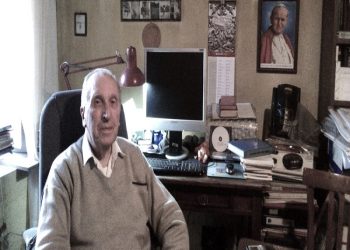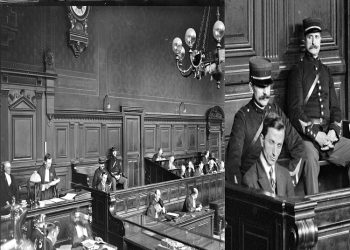By Artan Shkreli
Memorie.al / The further we get from that oppressive and anxious period that ended with the belated year 1991, the more the questions of “why” for everything that happened increase, burdened by the resentment that if what happened; “did it really have to happen”? And the more the 45-year numbness wears off and people start to get used to freedom, the clearer the reason why despotic authoritarianism had that apocalyptic effect on Albanians. Thus, the shameful mystifications of those who had taken on the role of the father and fed the “loyal” sons with spoiled food become more and more discernible! The false prophets had suddenly taken over the streets and squares of the cities, and taking advantage of social wounds and inherited poverty, they showed the people the path to the abyss as a way of salvation.
The Dubrovnik Archive
In the document titled “The notion of the public library in the renaissance Dubrovnik,” the Arbano-Croatian Aleksandër Stipçeviç, sheds light on the discovery of the written testimonies of Gjon Gazulli and medieval documents, which complete his biographical data.
In the document, the data on Gjon Gazulli’s life and work are presented in conjunction with the events that took place in Ragusa in the 15th, 16th, and 17th centuries. Thus, one of the things that attract attention is the rare fact that Stipçeviçi highlights, that the books of his private collection were then given for use by the citizens of Ragusa (Dubrovnik). This is what prompted the idea that the rich private libraries that Dubrovnik possesses should be opened to the public.
In a way, this act of Gjon Gazulli also marked the beginning of the birth of public libraries on the eastern coast of the Adriatic, where the fact is becoming clearer and clearer that, in what would later be iconized as Albania Veneta (Venetian Albania), the Arbanites were among the main actors of spiritual life.
In fact, the progress of people like Gjon Gazulli, son of the Pars Gjin Gazulli, as unusual as it may seem to us today, was something routine in pre-Ottoman Medieval Albania. It is likely that he received his first lessons in the humanist Scutaran environment, which disappeared as if it had never existed after the indigestible drama of 1479. As the Rector of the University of Padua (a leader of sciences in Europe at the time) and with a priceless library, this Albanian scholar, who died on February 19, 1465, did not show any restraint when it came to the freedom of his own country.
He was involved in a legal process for arms smuggling, which had to be sent to Gjergj Kastrioti in Arbania. But his authority and powerful friends who lobbied for Skanderbeg saved both the people and Gazulli’s reputation. The paths of freedom, like those of God, are endless. From the fortunate Gazullorëve dynasty, those paths would be traversed in the coming centuries in a thousand different ways, but only for a purpose that had already become a persistent idea: Freedom.
Today, after 500 years, the Croats, or Hrvati as they are called in the Great Highlands, claim Gjon as their compatriot born in Ragusa (an untrue fact), but of Arbanian origin. The opposite happens to us. Today, the last Gazuj or Gazullorët are without a grave, unpublished, and unspoken of. The Gazuj, the fatal taboo of the Albanian state, with two brothers who disappeared, the first by Ahmed Zogu (hanged in the middle of Shkodra) and the second by Enver Hoxha (left in a cave in Vrith, there in the mountains of the north). And we today are still held hostage by the wild January of 1946.
Dom Nikolli, a living passion
Without going into the Gazullorëve chronicles, which take you back to the end of the 13th century, or those of the unceasing anti-Ottoman resistance, which extends to our times, the personality of Nikoll Gazulli draws attention precisely because of the surprising similarity between him and the 15th-century humanist, Gjon Gazulli. This similarity is noted in the spectrum of interests that concerned the lives of both.
Like Gjon Gazulli (born 1399-1465), Nikoll (1891-1946), a full five centuries later, came into this world at the turn of centuries and dramatic events for the history of Albania. Both would have the good fortune to be educated in childhood in an environment oriented by humanism and patriotism, and to be educated mostly in Europe, but also the misfortune that at the end of their days they would experience the sadness of a homeland that was sliding badly towards an extreme anti-Europeanism. And while Gjon died when the name of the Arbanian had become the European symbol of resistance against anti-values, Nikoll gave up his spirit as the ideator and fighter of that very resistance, in the name of those values.
Nikoll Gazulli was, in fact, educated in Innsbruck when Austria was still an empire and Albania was considered by Franz Joseph as the province lost for centuries of the Illyrian Confederation. Its inclusion in the Austrian imperial framework was considered by the old man, who was obsessed with Albanians, as the achievement of an objective that had been sought since the time of Charlemagne. Historical twists had led in the time of the Ostrogoths to an Illyrian-Gothic symbiosis (the Herule Confederation of the 5th century), still not well explored, and which in its resistance to the Slavic factor, had left its traces in Arbania with the so-called Komani Culture.
This entire non-continuous historical-geographical iter (Illyricum – Herule Confederation – Albania + Dalmatia Veneta – Illyrian Confederation) within the framework of the Empire, lost its temporal depth and the existing political division. In this sense, the Arbanian or Albanian space, again took on very large dimensions. In a way, our Gazulli, although not a compatriot, felt like a fellow citizen with, for example, the Austrian Albanologist Jokli, or the Croatian, Shuflaj.
And it is this breathing of peoples who have taken and given for centuries, which had created the climate for complex and deep studies. Of course, in the family of the peoples of the Austro-Hungarian Empire, the Slavs, like the Albanians, had no primacy, and this made the Catholic Albanians have good relations with the Catholic Slavs (Croats).
The learned Nikoll Gazulli was considered a phenomenon by the entire Albanian cultural elite, so much so that his works were eagerly awaited by the most prominent organs of the time, both in the new Albanian Republic and in the periodicals of the Monarchy. Zogu killed his brother, but he did not dare to go any further. Gazulli’s personality and his international connections with Albanologists and Balkanologists made any punitive measure against him awkward.
The Franciscan library was Gazulli’s main stop in Shkodra, both when he served in the parish of Rrioll and when he covered the parish of Shkrel (after 1940). Although he collaborated with Mjedja and Fishta, in that library he was mainly in the company of Father Benedikt Dema. His works, highly valued by Norbert Jokli (to whom the collections Gazulli sent by mail served to compile the Etymological Dictionary of the Albanian language), were also sought by the leaders of the “Visarët e Kombit” necklace.
Thus in 1941, the book “New Dictionary – rare words used in the north of Albania” became a separate volume (no. XI) of this necklace. It was the first regional dictionary to be published and, along with that of Pano Tasa (who was also kept away from the new official science after liberation), it laid solid foundations in the course that had to be maintained for the further unification of the Albanian language. This unification had, in fact, started in 1916, by the famous Literary Commission, and which until the time of the preparation of the Dictionary, was also assisted by the Austrians R. Nachtigall and M. Lambertz.
Gazulli’s scrupulousness was also jokingly ridiculed by the erudite Karl Gurakuqi, Senior Inspector of Education and Gazulli’s promoter, who removed some erotic words from the Dictionary, which were considered offensive for the time. It was about a titanic work, which was not only about the collection but also about the deep analysis, into the darkness of centuries, of the etymology of truly rare words.
From his erudition, Nikoll Gazulli, especially dedicated to folklore and history, comes to the conclusion that Illyria has a religious history parallel to that of Italy, with martyrs, with bishoprics, and with its own Fathers, and says that; “in our Shkodra, we have a second Rome in the Balkans. Here the beginning of Christianity begins with apostolic times and continues with a Bishopric See that has an uninterrupted continuation, until late times.”
This knowledge was materializing there in the silence of the valley of Prroni Thatë in Shkrel, where Gazulli was drafting another major work: the “Toponomastic Dictionary,” written under the pseudonym “Gelasius.” He did not manage to finish it! It remains a major work, although it is distributed in different issues of “Hylli i Dritës,” and is considered by sound criticism as a monumental work and as one of the best Albanological scientific studies of all time.
The martyr of Shkrel
He had reached the letter “K” of the “Toponomastic Dictionary,” when the first massive awareness in Albania and in all of Eastern Europe of what was happening in the country occurred in the Great Highlands. The identification came right after the war, (the end of 1944) the Albanian communists made their cause with the cause of the Yugoslavs, accompanied by the dizzying suppression of rights and freedoms (for which the highlanders of the north were particularly sensitive), led to that “explosive mixture” that was called the Postrriba Uprising, or the Resistance of the Great Highlands (1945).
Nikoll Gazulli left the books and beat the bells of the Church of St. Nicholas in Shkrel. Today it is difficult to understand how a cleric joined the uprising and against the “emperor.” But for those who know the history of Northern Albania, every doubt is dispelled. The shepherds of the people could not but be on the side of their believers.
Even today in Shkrel, they keep memories of the energetic conversations that Dom Nikolli had with his people. They remember him as very serious, who managed to teach the catechism to the children of the surroundings, around the fire lit there in front of the cathedral church of Shkrel. He was a “very handsome man,” with celestial, blue, and dreamy eyes. When they tried to arrest him in January 1946, he refused to be imprisoned; “I will never fall into their hands alive!” – this is what he told the Shkrel residents who came to seek advice or find comfort.
He had heard about the tortures that the Clergy suffered in the prison of Shkodra. And he also refused to stay in the highlanders’ houses, so as “not to get them into trouble.” The repression was increasing. The great philologist hid for three weeks in a hollow in the ground near Dedaj, which is now called; “The Priest’s Cave.” Then he climbed to Vrith, where he stayed hidden in a real cave. The murder of Dom Nikolli is a movie story. The veil of mystery covers that murder, for which there are still many reservations today.
The Pursuit Soldiers, notified of his location, surrounded the entrance of the cave and fired long volleys of gunfire. When they approached, Gazulli’s body was cold and frozen. An old bullet wound had taken his life long ago. Who had done this? The diocesan Dom Nikoll Gazulli could not have killed himself. The name of the one who killed him with a bullet to the forehead, the highlanders of Shkrel, as well as Father Zef Pllumi – the historical memory of those parts – know how to tell it.
The region had remained breathless. A cart carried his body to the village of Stërkuj and there on the road, in front of the church of Sterkuj, they buried him. Those boys who opened the grave were ordered not to leave any sign, but since he was their parish priest, whom everyone was recognizing as a martyr, they surrounded the grave with stones and covered them with a little earth. The rain and time would remove that earth, – the boys thought, and then anyone could understand that there was a grave there.
The enigma of Gazulli’s grave remained so until 1995, when Mrs. Prendë, the servant of Dom Pjetër Gruda, the new parish priest of Shkrel (after 1949), just before she died, told the sisters of Mother Teresa in Tirana a secret, which she had been keeping in her mind for a long time.
So on a cold, stormy night in the early 1950s, Dom Pjetër Gruda, accompanied by Gjomark Prela, Kol Zefi, and two other men, made a pact to take the relics of Dom Nikoll and take them to the church of Shkrel. That’s what happened. In “rain and hell,” under the lightning of the Alps, Gazulli was reburied with a quick spiritual service, at the foot of the altar of Shna’Ndojt, inside the Church of St. Nicholas. The floor was then made of planks and after the burial, it was closed again without leaving a trace. Today the body of the Albanologist still sleeps in his church.
The secret was only revealed by Dom Pjetri’s mother, who had been listening with heartbreaking anguish. And in great worry for her son, who had gone out on that terrible night. Shaken, she had told only Prenda, whom, later at the end of her days, she had asked to take care of her son, Dom Pjetri, who had now been imprisoned.
Dom Pjetër Gruda died in prison in Saranda. He gave his last breath into the hands of Father Zef Pllumi (“Honor of the Nation”), but he did not break the pact even at the edge of the grave. The truth of Nikoll Gazulli was fortunately “betrayed” by Prenda, a humble and faithful woman, but who was not bound by the pact.
The great lexicographer has now taken his place in history. His books are finally being published. Even the letters, as they are a testimony to the passion of this extraordinary man for his country, of this man, whose message gives us identity and pride – as Albanians. / Memorie.al




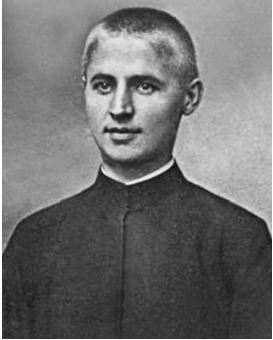
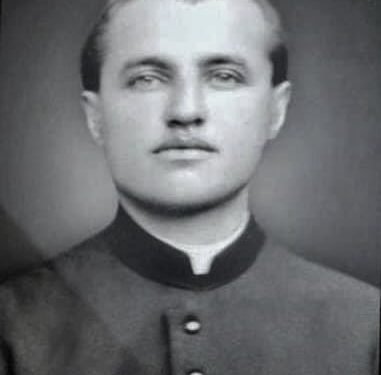
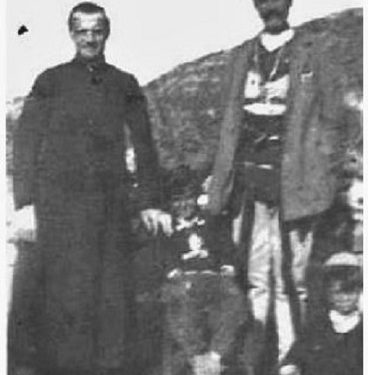
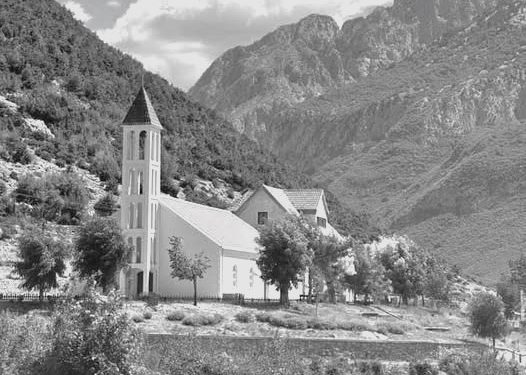
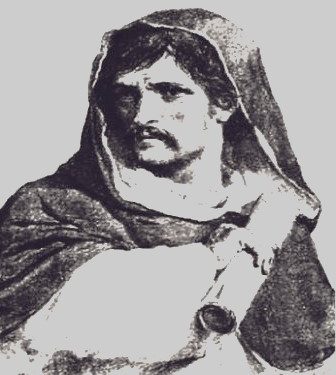
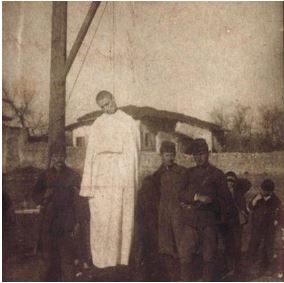
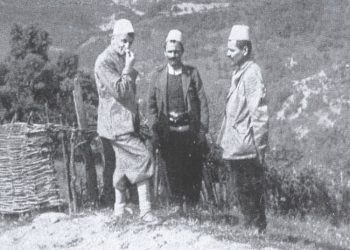
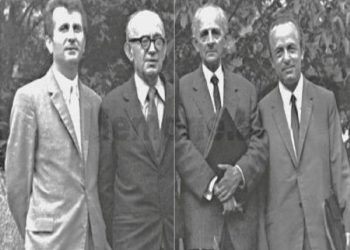
![“We hosted the German friend with wine, ‘Moskat’ raki that Enver [Hoxha] used to drink, but in his villa, he told me: ‘Hey Belul, who told you to accompany Strauss…?’”/ The rare testimony of the former Chairman of the Pogradec Committee](https://memorie.al/wp-content/uploads/2025/11/jozef-shtarus-350x250.jpg)

